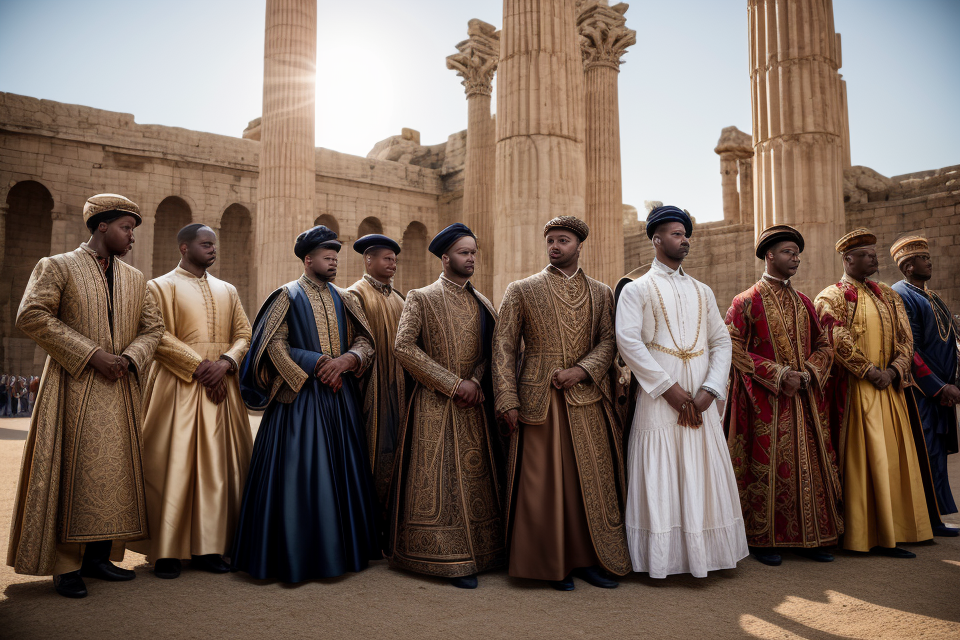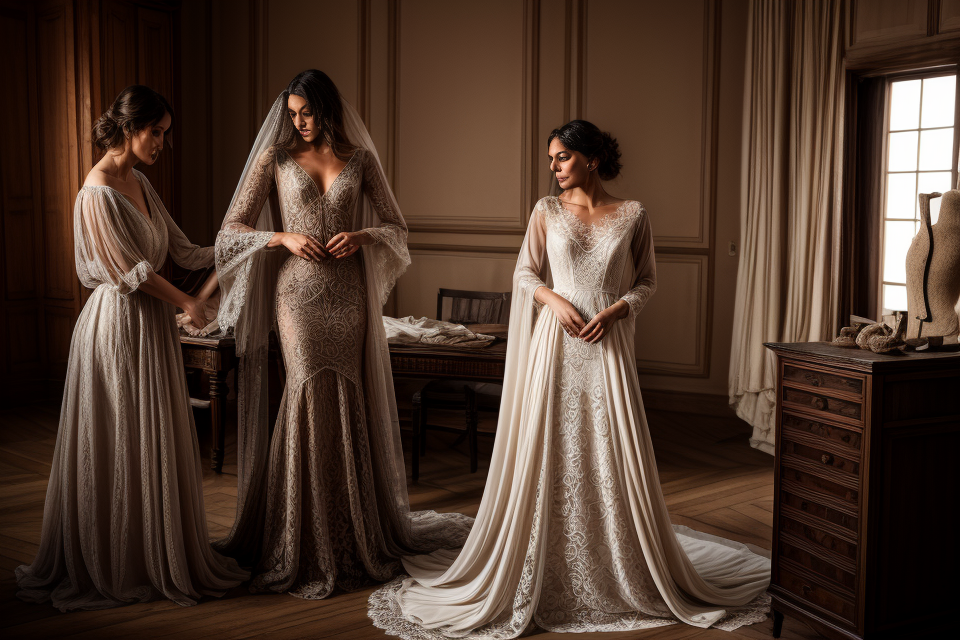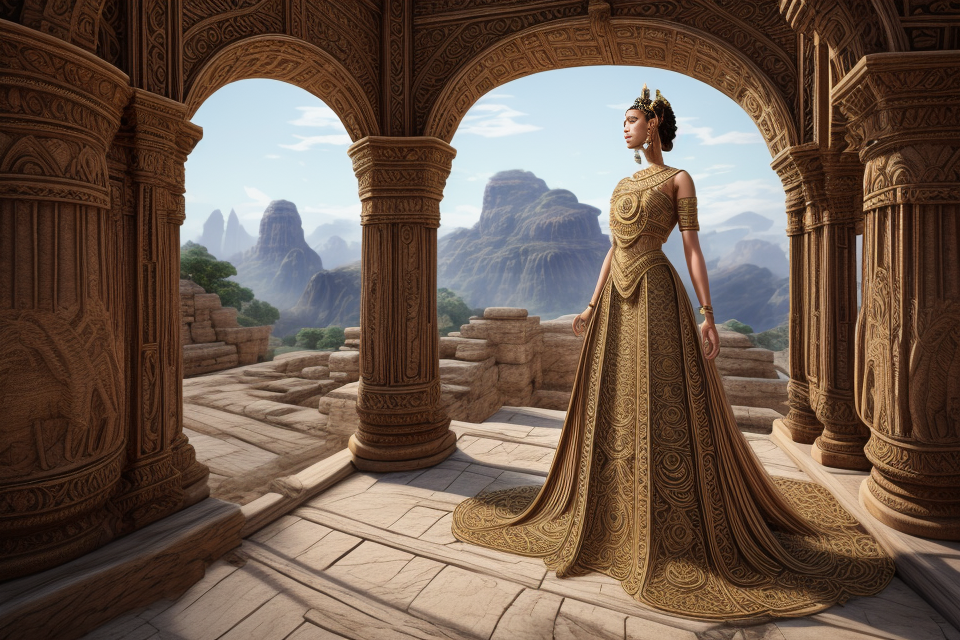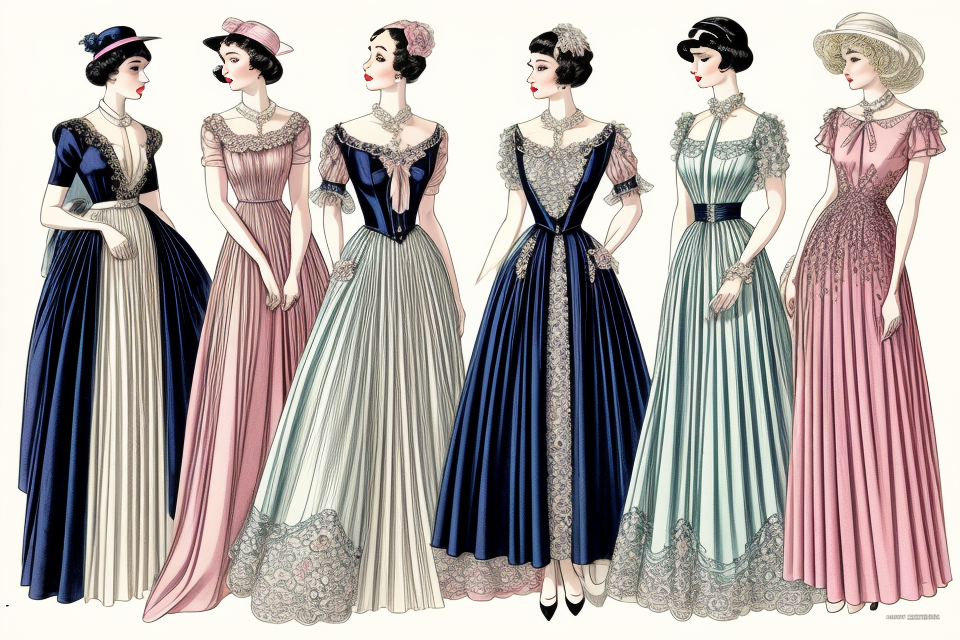
The fashion world is full of surprises, and one of the most surprising things is the origins of dresses. Many people assume that dresses were always made for women, but the truth is that they have a surprisingly masculine origin. In fact, dresses were originally designed for men, and it wasn’t until much later that they became a staple of women’s fashion. In this article, we’ll explore the fascinating history of dresses and uncover the surprising truth about their origins. So, let’s dive in and discover how dresses went from being a male garment to a feminine fashion statement.
The origins of dresses are often misunderstood and the question of whether they were originally made for men is a common misconception. In reality, dresses have been worn by both men and women throughout history and across different cultures. While the term “dress” is often associated with feminine clothing, it originally referred to a type of garment worn by both genders. The earliest known dresses were actually worn by ancient Egyptian men and were designed to be both functional and fashionable. These garments were typically made from linen and were often adorned with intricate embroidery and decorative elements. Over time, the design of dresses evolved and spread to other cultures, eventually becoming a staple of women’s fashion. Today, dresses are still a popular choice for both men and women and continue to be a symbol of style and elegance.
The Evolution of Clothing: From Utility to Fashion
The First Clothing: Practical and Functional
The earliest clothing was designed to serve a practical purpose: to protect the human body from the elements. The need for clothing arose from the requirement to cover and protect the skin, which is the largest organ in the human body. In prehistoric times, clothing was primarily made from animal hides and skins, which were the primary materials available for making clothing.
Animal hides and skins were the first materials used to make clothing. These materials were durable and provided excellent protection against the elements. The earliest clothing made from animal hides and skins were simple garments such as cloaks, tunics, and leggings. These garments were typically made from the hides of large animals such as buffalo, deer, and elk.
Loincloths and sarongs were also early forms of clothing that were used by ancient civilizations. These garments were typically made from woven fabrics such as cotton, silk, and linen. Loincloths were a type of garment that was worn by men and consisted of a rectangular piece of fabric that was draped around the waist and secured with a cord or belt. Sarongs were a type of garment that was worn by both men and women and consisted of a rectangular piece of fabric that was draped around the body and secured at the waist.
Woven fabrics were another important material used in the making of early clothing. These fabrics were made by interweaving threads or yarns to create a cloth-like material. The earliest woven fabrics were made using simple looms and were made from natural fibers such as cotton, flax, and wool. The development of weaving technology allowed for the creation of more complex garments, such as tunics, dresses, and trousers.
Overall, the earliest clothing was designed to be practical and functional, providing protection against the elements and covering the body. The use of animal hides and skins, loincloths and sarongs, and woven fabrics were the primary materials used in the making of early clothing. These garments were simple and basic, but they played a crucial role in the evolution of clothing from a purely utilitarian item to a fashion statement.
The Emergence of Fashion and Adornment
Ancient Civilizations and Their Attire
Throughout history, fashion has evolved in response to cultural, social, and economic factors. The earliest known examples of clothing were practical garments made from animal hides, which were used to protect the wearer from the elements. These early garments were not designed for fashion purposes, but rather for survival.
The Rise of Textiles and Dyes
As civilizations developed, so did the technology used to create textiles and dyes. The invention of the loom allowed for the mass production of woven fabrics, while the discovery of natural dyes like indigo and madder allowed for a wider range of colors to be used in clothing. This increase in the availability and variety of textiles and dyes led to a greater focus on fashion and adornment.
Cultural and Social Influences on Fashion
Fashion has always been influenced by cultural and social factors. In ancient civilizations, clothing was often used to display social status, with wealthy individuals wearing more elaborate and expensive garments than those of lower social classes. In addition, religious and cultural beliefs often influenced the styles and materials used in clothing. For example, in ancient Greece, clothing was often made from light, breathable fabrics like linen, while in ancient Rome, clothing was often decorated with intricate embroidery and jewels.
As civilizations became more interconnected, fashion began to spread across different cultures and regions. For example, the Silk Road, a network of trade routes that connected China, India, and Europe, allowed for the exchange of goods, including textiles and fashion trends. This led to the development of new styles and the fusion of different cultural influences in fashion.
Overall, the emergence of fashion and adornment can be traced back to the earliest examples of clothing, which were created for practical purposes. However, as civilizations developed and technology advanced, fashion became more focused on self-expression, social status, and cultural identity.
Dresses Throughout History: A Gender-Neutral Garment?
The Early Days of Dresses
-
Tunic Dresses and Draped Garments
In ancient civilizations, such as the Sumerians and Egyptians, tunics were a common form of dress for both men and women. These simple garments were often made from rectangular pieces of cloth that were draped around the body and secured at the shoulders. The draped effect created a form-fitting silhouette that flattered the figure, regardless of gender.
-
Corsetry and Cinched Waists
As societies became more sophisticated, so did the art of dressmaking. Corsetry, the practice of wearing a stiff, boned garment to shape the body, was originally developed to create a desired silhouette for both men and women. The use of corsets, along with the cinching of waists with ribbons or belts, created an hourglass figure that was prized by many cultures.
-
The Evolution of Sleeves
Sleeves, which originally served as a practical means of protecting the arms from the elements, underwent significant changes throughout history. In the early days of dresses, sleeves were often large and billowy, resembling the sleeves of modern-day smocks. As fashion evolved, sleeves became more form-fitting, and eventually, they were designed to be decorative, with lace, embroidery, and other embellishments.
Dresses for Men?
-
The History of Male Attire
In ancient times, men’s clothing was often more elaborate and decorative than it is today. For example, in ancient Greece, men wore flowing robes called “chitons” that were often decorated with intricate patterns and designs. Similarly, in ancient Rome, men wore “tunics” that were often adorned with ornate borders and sleeves.
-
The Role of Dresses in Men’s Fashion
Although dresses are often associated with women’s fashion, they have played a significant role in men’s fashion throughout history. In fact, until the 19th century, dresses were a common garment for both men and women. During this time, dresses were often worn by men as a sign of wealth and status.
-
Examples of Men Wearing Dresses in History
There are many examples throughout history of men wearing dresses. For example, in 17th century Europe, men often wore “bodices” – a type of fitted jacket that was similar to a woman’s corset. Similarly, in some traditional cultures, such as the Native American Powwow, men still wear dresses as a symbol of cultural identity.
In modern times, dresses have become firmly associated with women’s fashion, but their origins are firmly rooted in men’s fashion. As fashion trends continue to evolve, it will be interesting to see how the gender roles associated with different types of clothing continue to shift.
Gender and Clothing: Breaking Down Barriers
The Social Construct of Gender and Clothing
- Gender and clothing have been intricately linked throughout history, with societal norms and expectations playing a significant role in shaping the way people dress.
- The concept of gender as a social construct has been the subject of much debate in recent years, with many arguing that traditional gender roles and expectations are outdated and limiting.
- The idea that certain types of clothing are “appropriate” for one gender but not another is a product of these societal norms and expectations.
- For example, women have historically been expected to wear dresses and skirts, while men have been expected to wear pants and suits.
- These expectations have been reinforced by media, advertising, and fashion industry standards, leading to a narrow definition of what is considered “appropriate” attire for each gender.
- However, in recent years, there has been a growing movement to challenge these norms and break down barriers when it comes to gender and clothing.
- Some designers and fashion houses have begun to experiment with gender-neutral clothing, challenging the idea that certain types of clothing are only appropriate for one gender.
- This movement has been embraced by many, who see it as a way to promote inclusivity and acceptance of all gender identities.
- As society continues to evolve and become more accepting of diverse gender identities, the role of clothing in expressing identity and breaking down barriers will become increasingly important.
Contemporary Fashion and Gender-Neutral Clothing
Designers and brands are increasingly embracing gender-neutrality in their collections, challenging traditional gender norms and offering more inclusive options for consumers.
- High-end fashion houses such as Gucci, Versace, and Kenzo have launched gender-neutral clothing lines, blurring the lines between male and female fashion.
- Brands like ASOS and H&M have introduced gender-neutral clothing sections in their online stores, allowing customers to browse and purchase clothing without the constraints of gender labels.
- Even fast-fashion giants like Zara and Forever 21 have started to offer more gender-neutral options, catering to the growing demand for inclusive fashion.
Celebrities and public figures have also played a significant role in popularizing gender-neutral fashion.
- Celebrities like Harry Styles, Billy Porter, and Janelle Monáe have been seen wearing clothing traditionally associated with the opposite gender, encouraging others to challenge gender norms and stereotypes.
- Public figures like model and activist Munroe Bergdorf have used their platforms to advocate for gender-neutral fashion and promote body positivity and inclusivity.
The future of gender-neutral fashion looks promising, with more designers and brands expected to embrace this trend.
- As society becomes more accepting of diverse gender identities and expressions, the demand for gender-neutral clothing is likely to increase.
- With more brands and designers embracing gender-neutrality, it is possible that traditional gender labels in fashion may become obsolete in the near future.
- However, it is important to note that the fashion industry still has a long way to go in terms of inclusivity and representation, and there is a need for greater diversity in the voices and perspectives shaping the industry.
The Psychology of Gender and Clothing
Gender Identity and Clothing Choices
- The Role of Clothing in Personal Identity
Clothing has always been an essential part of human expression, serving as a medium to communicate personal style, cultural background, and social status. While clothing is often associated with gender, recent studies have shown that the relationship between gender identity and clothing choices is more complex than previously thought.
- The Influence of Clothing on Gender Expression
The way individuals dress can have a significant impact on how they are perceived by others. Clothing choices can convey different aspects of gender expression, from masculinity to femininity, and everything in between. The choice of clothing can also reflect an individual’s level of conformity to societal norms or their desire to challenge them.
However, it is important to recognize that the relationship between gender identity and clothing choices is not one-dimensional. The way individuals perceive themselves and their gender identity can influence their clothing choices, and these choices can, in turn, impact their personal and social identity. For example, a person who identifies as male but enjoys wearing traditionally feminine clothing may face societal pressure to conform to traditional gender norms, which can impact their self-esteem and personal identity.
Moreover, the impact of clothing on gender expression is not limited to individuals who identify as LGBTQ+. Even individuals who identify as cisgender (whose gender identity aligns with the sex they were assigned at birth) can experience pressure to conform to societal norms when it comes to clothing choices.
In conclusion, the relationship between gender identity and clothing choices is multifaceted and complex. Clothing can serve as a medium for individuals to express their personal style and identity, while also reflecting societal norms and expectations. Understanding the impact of clothing on gender expression is crucial for fostering a more inclusive and accepting society.
Perceptions and Stereotypes of Men Wearing Dresses
-
Overcoming Social Stigmas
- Challenging Traditional Gender Norms
- Examining the Role of Society in Shaping Our Perceptions
- Exploring the Benefits of Gender-Neutral Clothing
- Redefining Masculinity Through Fashion
- Embracing Individuality and Self-Expression
- Examining the Influence of Popular Culture on Gender and Fashion
- Challenging Traditional Gender Norms
-
The Power of Visibility and Representation
- The Importance of Seeing Diverse Representations
- Breaking Down Barriers and Inspiring Change
- Examining the Impact of Media and Advertising on Representation
- Empowering Marginalized Communities Through Fashion
- Reclaiming Identity and Expression
- Exploring the Role of Fashion in Building a Sense of Community
- The Importance of Seeing Diverse Representations
The Art of Dressing Beyond Gender Binaries
The Joy of Mixing and Matching
Exploring the freedom of gender-neutral dressing
- In recent years, the fashion industry has witnessed a shift towards gender-neutral clothing, with many designers and retailers embracing the concept of unisex fashion.
- This trend has been fueled by a growing desire for more inclusive and diverse representation in fashion, as well as a recognition of the fluidity of gender identity.
- The rise of gender-neutral dressing has enabled individuals to express their personal style without the constraints of traditional gender norms, opening up new possibilities for self-expression and creativity.
Delving into the art of personal expression
- Dressing is often seen as a form of self-expression, and the ability to mix and match different clothing items allows individuals to create unique and personalized styles.
- This freedom of expression can be particularly empowering for those who feel constrained by traditional gender norms, as they are able to break free from societal expectations and embrace their individuality.
- By mixing and matching different elements, individuals can create looks that reflect their personal taste, interests, and identity, fostering a sense of self-discovery and authenticity.
In conclusion, the joy of mixing and matching in fashion is not only about creating visually appealing outfits but also about breaking down gender barriers and celebrating individuality. By embracing gender-neutral dressing, individuals can explore new possibilities for self-expression and push the boundaries of traditional fashion norms.
Inspiring Change through Fashion
-
Breaking Barriers and Challenging Norms
- The history of fashion has been shaped by social and cultural norms that dictate how individuals should dress based on their gender.
- However, the idea of gender-specific clothing is a relatively modern concept, and historically, there have been instances where individuals have broken barriers and challenged norms by wearing clothing that was traditionally associated with the opposite gender.
- This subversion of gendered dress codes has been used as a form of protest and self-expression, allowing individuals to challenge societal expectations and push boundaries.
-
The Impact of Individual Choices on Society
- The choices made by individuals when it comes to their attire have the power to inspire change and challenge societal norms.
- When individuals make a conscious decision to dress outside of gender binaries, they send a message that challenges traditional gender roles and expectations.
- This message can have a ripple effect, inspiring others to question their own beliefs and ideas about gender and fashion.
- Furthermore, as more individuals embrace the idea of gender-neutral clothing, it can lead to a shift in societal attitudes and the gradual normalization of non-binary expressions of gender in fashion.
- In this way, the choices made by individuals when it comes to their attire can have a significant impact on society, inspiring change and pushing the boundaries of gender expression in fashion.
FAQs
1. What is the origin of dresses?
Dresses have been around for centuries, and their origins can be traced back to ancient civilizations such as the Egyptians, Greeks, and Romans. However, the exact origin of dresses is difficult to pinpoint as they were not initially designed for a specific gender.
2. Were dresses originally made for men?
There is no conclusive evidence to suggest that dresses were originally made for men. In fact, the concept of gender-specific clothing is a relatively modern invention. Throughout history, clothing was often designed to be unisex or was adapted from one gender to another based on cultural and societal norms.
3. When did dresses become associated with women?
Dresses became associated with women during the 18th and 19th centuries, as the concept of gender-specific clothing became more prevalent. Women’s dresses were designed to be more ornate and decorative than men’s clothing, and this helped to further distinguish the two genders.
4. Can men wear dresses today?
Absolutely! In recent years, there has been a growing trend of men wearing dresses, whether it be for fashion or as a statement piece. Some men even choose to wear dresses to formal events or as part of their everyday wardrobe. There is no rule that says dresses can only be worn by women, and many designers are now creating clothing lines specifically for men who want to wear dresses.
5. Are dresses a form of gender expression?
Yes, dresses can be a form of gender expression for those who identify as male or non-binary. Clothing is often used as a way to express one’s identity and personal style, and there is no one “right” way to wear a dress. Some people may choose to wear dresses in a more traditionally feminine style, while others may opt for a more masculine or androgynous look. Ultimately, the way one chooses to wear a dress is a personal choice and should be respected.


